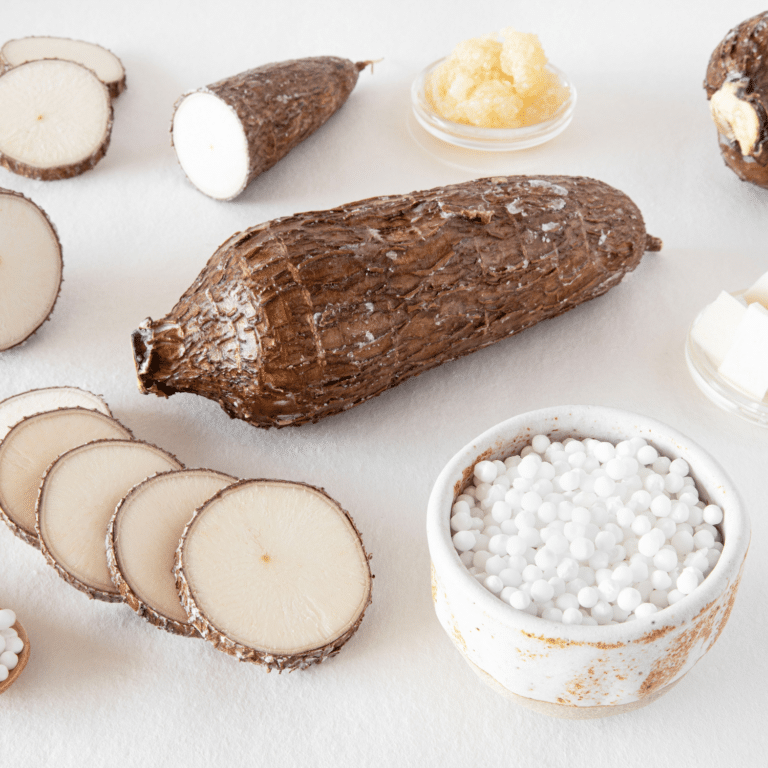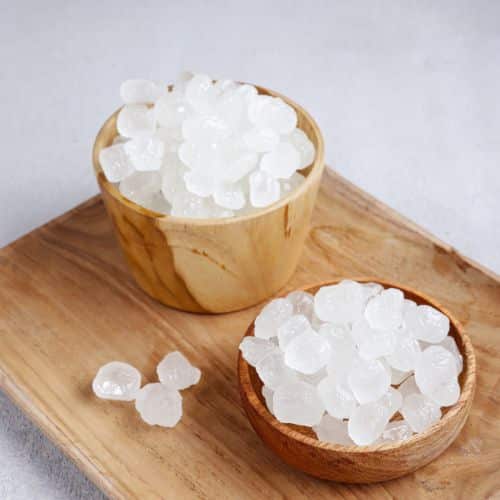As I navigate through the vibrant landscape of my heritage and the wide array of cultures I’ve encountered, my personal apothecary of home remedies has grown rich with diverse, potent solutions for everyday ailments. Each bottle, each herb, and each recipe carries a story, a snippet of wisdom passed down through generations, transcending borders and surviving the relentless march of time. These remedies, collected from the bustling spice bazaars of Bombay to the serene countryside of Tuscany, are more than mere treatments; they represent a deep communion with nature’s profound healing powers.
The Spice-Scented Alleys of Bombay
My initiation into the world of traditional medicine began at home and in the aromatic alleys of Bombay’s spice bazaars. It was here, among heaps of turmeric, cumin, and coriander, that I learned the foundational principles of healing from nature. Turmeric, revered for its potent anti-inflammatory and antiseptic properties, was the first remedy my mother introduced to me. She would mix turmeric powder with a bit of warm mustard oil to create a healing paste for sprains and bruises, explaining how our ancestors used it to ward off numerous ailments.
Ginger: The Universal Healer
As I’ve wandered across the globe, ginger has emerged as an essential component in my arsenal of natural remedies. Renowned for its effectiveness in alleviating nausea and enhancing digestive health, I’ve savored ginger in many forms—from comforting teas in England to piquant candies in Singapore. Here, I share two of my favorite ginger-based remedies, both practical and potent in their healing properties.
One of my staple remedies is a ginger-honey tincture, a simple concoction that has become indispensable in our household. To prepare it, I slice fresh ginger root and submerge these slices in raw honey. This mixture is left to infuse for a few weeks in a cool, dark place. As the ginger imparts its pungent, spicy essence into the honey, it transforms into a syrup that not only soothes the throat but also offers a robust boost to the immune system. A spoonful of this tincture taken at the first sign of a sore throat or digestive upset can work wonders.
1. Ginger-Honey Tincture for Digestive and Immune Health
This ginger-honey tincture is wonderfully simple to prepare and serves as a robust tonic for both throat soothing and immune system boosting.
Ingredients:
- 1 cup of fresh ginger root, thinly sliced
- 2 cups of raw honey
Instructions:
- Prepare the Ginger: Thoroughly wash the ginger root and slice it thinly. There’s no need to peel the ginger, as the skin contains additional nutrients.
- Jar Preparation: Place the ginger slices in a clean, dry jar.
- Add Honey: Pour raw honey over the ginger slices until they are completely submerged. Ensure there are no air pockets.
- Seal and Store: Close the jar tightly and store it in a cool, dark place. Let the mixture infuse for at least 3 weeks, shaking the jar occasionally to help the ginger and honey mix well.
- Strain (Optional): After 3 weeks, you can strain the ginger slices from the honey for a smoother syrup, though leaving the ginger in the honey can enhance the potency over time.
Best Practices:
- Use high-quality, organic ingredients to ensure the maximum benefit and reduce the risk of contaminants.
- Make sure all utensils and jars are thoroughly cleaned to prevent any mold growth.
Cautions:
- Ginger is potent and can cause heartburn or stomach upset in sensitive individuals. Start with small doses to test tolerance.
- Honey should not be given to children under one year of age due to the risk of botulism.
Another favorite, especially during the hot summer months or when dealing with stomach ailments, is ginger lemonade. This refreshing drink combines the digestive benefits of ginger with the cleansing properties of fresh lemon juice. I start by boiling a handful of fresh ginger slices in water to extract their potent flavors and health benefits. After straining out the ginger, I add the juice of several lemons and sweeten the mixture to taste with honey or maple syrup. Served chilled, this lemonade not only hydrates but also helps settle the stomach and rejuvenate the body.
2. Ginger Lemonade for Hydration and Refreshment
This ginger lemonade not only refreshes but also aids in digestion and can be a delightful remedy for those needing a gentle stomach soother.
Ingredients:
- ½ cup of fresh ginger root, sliced
- 4 cups of water
- Juice of 3 lemons
- Honey or maple syrup, to taste
Instructions:
- Boil Ginger: In a medium saucepan, combine the ginger slices with water. Bring to a boil, then simmer for about 20 minutes to allow the ginger to infuse the water.
- Add Lemon Juice: After the ginger has infused, remove the pan from heat. Strain the ginger pieces out, and while the liquid is still warm, add the freshly squeezed lemon juice.
- Sweeten: Once the liquid comes to room temperature, add honey or maple syrup to sweeten the mixture. Stir well to ensure everything is fully dissolved.
- Cool and Serve: Allow the mixture to cool to room temperature, then refrigerate. Serve chilled for a refreshing and soothing drink.
Best Practices:
- Adjust the amount of lemon juice or sweetener to match your personal taste preferences.
- If serving to guests, always check for any ginger allergies or sensitivities.
Cautions:
- Lemon and ginger are acidic and can affect sensitive teeth or mouths. Consider drinking through a straw to minimize contact with teeth.
- As with any remedy, moderation is key. Enjoy ginger lemonade as part of a balanced approach to health.
These ginger-based remedies are not only a testament to the healing power of natural ingredients but also a reflection of the diverse culinary traditions I’ve embraced in my travels. They blend simplicity with profound efficacy, providing accessible health benefits for a range of needs.
Integrating Ayurvedic Wisdom with Western Insights
Adopting Ayurvedic practices, I learned to treat fever with a blend of patience and natural remedies rather than with immediate pharmaceutical intervention. A time-honored syrup made from tulsi (holy basil), black pepper, and raw honey offers not just fever relief but also enhances the body’s resistance. This ancient wisdom, combined with Western herbalism, enriched my understanding and expanded my home health practices to include remedies like elderberry syrup—a powerful antiviral that has become essential during flu seasons.
Though I have to say, instinctively my go to in our home has always been Kokum – bless you daddy dearest for introducing Kokum in my life! It’s a staple in most Maharashtrian households & growing up in Bombay has always offered it’s miraculous multi-faceted advantages. Kokum, known scientifically as Garcinia indica, is a fruit revered in Ayurvedic medicine for its ability to balance the Pitta dosha, making it particularly effective for conditions related to heat, such as fever and heat stroke. Kokum’s cooling properties, along with its digestive and cardioprotective benefits, make it a valuable ingredient in traditional Indian remedies. Here’s an Ayurvedic kokum recipe that is particularly useful for alleviating symptoms of heat, fever, and heat stroke:
Ayurvedic Kokum Sherbet
Ingredients:
- 10-12 dried kokum fruits
- 4 cups of water
- 1-2 teaspoons of natural sugar or jaggery (adjust to taste)
- 1/2 teaspoon of roasted cumin powder
- A pinch of black salt (optional)
- Fresh mint leaves for garnish (optional)
Instructions:
- Soak the Kokum:
- Soak the dried kokum fruits in 1 cup of water for about 3-4 hours or until they are soft and plump. This helps to extract the maximum flavor and medicinal properties from the kokum.
- Prepare the Sherbet:
- After soaking, transfer the kokum along with the water into a saucepan. Add the remaining 3 cups of water and bring the mixture to a simmer over medium heat.
- Once it starts to simmer, remove the saucepan from the heat. Allow the kokum to steep in the hot water as it cools. This process will help infuse the water with kokum’s essence.
- Mash and Strain:
- After the mixture has cooled down, mash the kokum fruits gently to release more flavor into the water. Strain the mixture through a fine mesh sieve into a large bowl or pitcher. Press the kokum against the sieve with the back of a spoon to extract as much liquid as possible.
- Flavor the Sherbet:
- Add natural sugar or jaggery to the strained liquid according to your taste. Stir well until fully dissolved.
- Add roasted cumin powder and a pinch of black salt for an enhanced flavor and added digestive benefits. Both these ingredients help in digestion and also replenish essential minerals lost due to sweating.
- Chill and Serve:
- Refrigerate the sherbet until it is thoroughly chilled. Serve the kokum sherbet in glasses garnished with fresh mint leaves for a refreshing effect.
Health Benefits:
- Cooling Effect: Kokum’s natural cooling properties make this sherbet an excellent remedy for reducing body heat during the summer, making it beneficial for treating heat-related conditions.
- Hydration: The high water content helps to keep the body hydrated, crucial for managing fever and preventing heat stroke.
- Digestive Aid: Cumin and black salt promote healthy digestion, which can be compromised during fever or heat stress.
Usage Tips:
- For individuals experiencing heat stroke or high fever, drinking this sherbet multiple times a day can provide relief.
- Always prepare with fresh ingredients to ensure the best flavor and health benefits.
This Ayurvedic kokum sherbet not only helps in cooling down the body but also serves as a delightful, refreshing drink that can be enjoyed by everyone in your family, particularly during the hot and humid days of summer.
Apple Cider Vinegar and Its Multifaceted Uses
In the West, I embraced apple cider vinegar, a remedy as versatile as it is potent. I learned to mix it with water for a detoxifying morning drink, blend it with clay for a purifying face mask, and create a rinse for scalp health. Its acidity and antibacterial properties make it indispensable for a range of uses from skincare to digestive health.
The Protective Charms of Activated Charcoal
Activated charcoal, with its dark, mysterious granules, holds a special place in my cabinet of natural remedies. Known for its potent toxin-absorbing qualities, this simple substance, derived from burning carbon-rich materials like wood or coconut shells, has become a trusted ally in my family’s healthcare routine. The process of activation endows charcoal with an incredibly porous surface, dramatically increasing its ability to capture and bind substances.
Uses of Activated Charcoal
Activated charcoal is not just versatile; it is highly effective in a range of acute care scenarios:
- Bites and Stings: For insect bites and stings that can cause skin irritation and swelling, activated charcoal acts like a magnet, pulling out the toxins and reducing inflammation. Applying a paste made from activated charcoal powder and water directly to the affected area can draw out venom or irritants, significantly soothing pain and accelerating healing.
- Food Poisoning: One of the most common uses of activated charcoal is in the treatment of food poisoning, where its ability to adsorb toxins comes into full play. When ingested, activated charcoal works through the digestive tract, binding with toxins and chemicals before they can be absorbed by the body. This helps to alleviate symptoms such as nausea, stomach cramps, and diarrhea. A typical dose after a suspected food poisoning incident or during a bout of gastrointestinal upset involves mixing one to two tablespoons of activated charcoal in water and drinking it down.
- Skin Impurities: Beyond its internal uses, activated charcoal is a boon for skincare, particularly for those dealing with acne or oily skin. Its adsorbent nature helps to clear pores of excessive oil and dirt, making it a popular ingredient in facial masks. A simple mask can be created by mixing activated charcoal powder with aloe vera gel to form a spreadable paste, providing a detoxifying facial treatment that purifies and refreshes the skin.
How to Use Activated Charcoal
- Poultices: For external applications like bites or skin infections, mix activated charcoal with a little water and a teaspoon of bentonite clay, if available, to form a thick paste. Apply this paste directly to the affected area and cover with a bandage or cloth to keep it in place. The poultice can be left on for a couple of hours or even overnight, especially in the case of severe bites or stings.
- Oral Ingestion: For internal detoxification, such as in cases of food poisoning or stomach bugs, activated charcoal can be taken orally. It’s important to consume it on an empty stomach, ensuring that it binds to toxins rather than the nutrients in your food. However, care must be taken not to use it more than necessary, as it does not discriminate between good and bad substances, meaning it can also remove vital nutrients from your system.
Cautions and Considerations
While activated charcoal is a powerful tool, there are important considerations to keep in mind:
- It should not be taken within two hours of vitamins or medication, as it may interfere with their absorption.
- Chronic use or excessive doses may lead to constipation or black stools.
- Always stay hydrated when using activated charcoal internally, as it can cause dehydration.
- It’s crucial to consult with a healthcare provider before starting any treatment involving activated charcoal, especially for children or pregnant women.
Activated charcoal’s purifying effects are not only immediate but profound, making it an essential component of both my emergency kit and daily wellness practices. Its ability to provide relief and aid recovery in a variety of scenarios is a testament to the power of simple, natural remedies in maintaining health and well-being.l.
Ancient Syrups and Tinctures for Modern Maladies
From elderberry syrup to ginger tinctures, the art of syrup and tincture making has been a transformative element in my journey. These ancient concoctions not only connect us to our past but also offer profound benefits in today’s fast-paced world. They represent a bridge between the old and the new, a testament to the enduring power of natural remedies.
As I continue to explore and integrate these age-old remedies into my daily life, I invite you to do the same. Explore the herbs, spices, and preparations that resonate with your cultural background or personal health philosophy. What ancient remedies do you hold dear? How do they enhance your well-being? Share your stories and insights below, and let us cultivate a global community united by our shared trust in nature’s healing powers.






